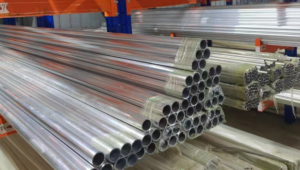Monel alloy, as a high-strength nickel-copper series alloy, boasts exceptional heat resistance and corrosion resistance, making it widely applicable across numerous industries. However, despite its favorable welding properties, Monel alloy is prone to hot cracking during the welding process, which can compromise its service life. Therefore, when welding Monel alloy, attention must be paid to the following key points. In this article, we will take a closer look at monel alloy welding performance and techniques.

Monel Alloy Welding Performance and Techniques:
Firstly, in terms of pre-welding preparation. Impurities in Monel alloy can affect metal fluidity, thermal conductivity, leading to reduced plasticity and toughness of the weld joint, as well as weakened corrosion resistance, ultimately resulting in microcracks or hidden cracks. Consequently, prior to welding, it is crucial to perform proper groove preparation and weldment cleaning. For instance, adopting chemical cleaning methods can thoroughly remove oxides from the surface of the weldment, ensuring a smooth welding process.
Secondly, regarding welding methods. When welding Monel alloy, various techniques can be employed, including gas welding, arc welding, TIG welding, laser welding, and plasma welding. Among these, arc welding is the most commonly used method, ensuring superior welding quality for Monel alloy. For Monel 400 alloy, tungsten inert gas (TIG) welding is often preferred as it effectively prevents weld bead oxidation, ensures proper bead formation, and thereby enhances the welding quality of Monel alloy.
Thirdly, in terms of welding operation. In addition to local or overall preheating before welding, during the welding process, it is essential to strictly control welding current, protective gas flow rate, welding speed, and torch manipulation to ensure weld quality and uniformity. Furthermore, due to Monel alloy’s low thermal conductivity, careful grinding of each weld bead surface is necessary to maintain performance and quality in multi-layer welding.
Lastly, concerning welding sequence. A proper welding sequence during Monel alloy welding can effectively control heat input and cooling rates, ensuring uniform heating of the weld, reducing the formation of hot cracks and porosity, and thereby enhancing the quality and reliability of Monel alloy welds. For instance, in TIG welding of Monel 400 alloy, following a specific sequence such as root pass, fill pass, and cap pass ensures that the weld quality meets requirements.
Summary
In summary, while Monel alloy exhibits excellent welding properties, adhering to proper pre-welding preparation, selecting suitable welding methods, executing correct welding operations, and following strict welding sequences can effectively prevent welding defects, providing crucial safeguards for the welding quality of Monel alloy.
Why Choose Huaxiao Alloy?
Thank you for reading our article and we hope it can help you to have a better understanding of the monel alloy welding performance and techniques. If you are looking for suppliers and manufacturers of Monel alloy, we would advise you to visit Huaxiao Alloy.
As a leading supplier monel alloy from Shanghai China, Huaxiao Alloy offers customers high-quality Monel 400 and Monel K500 at very competitive prices.



